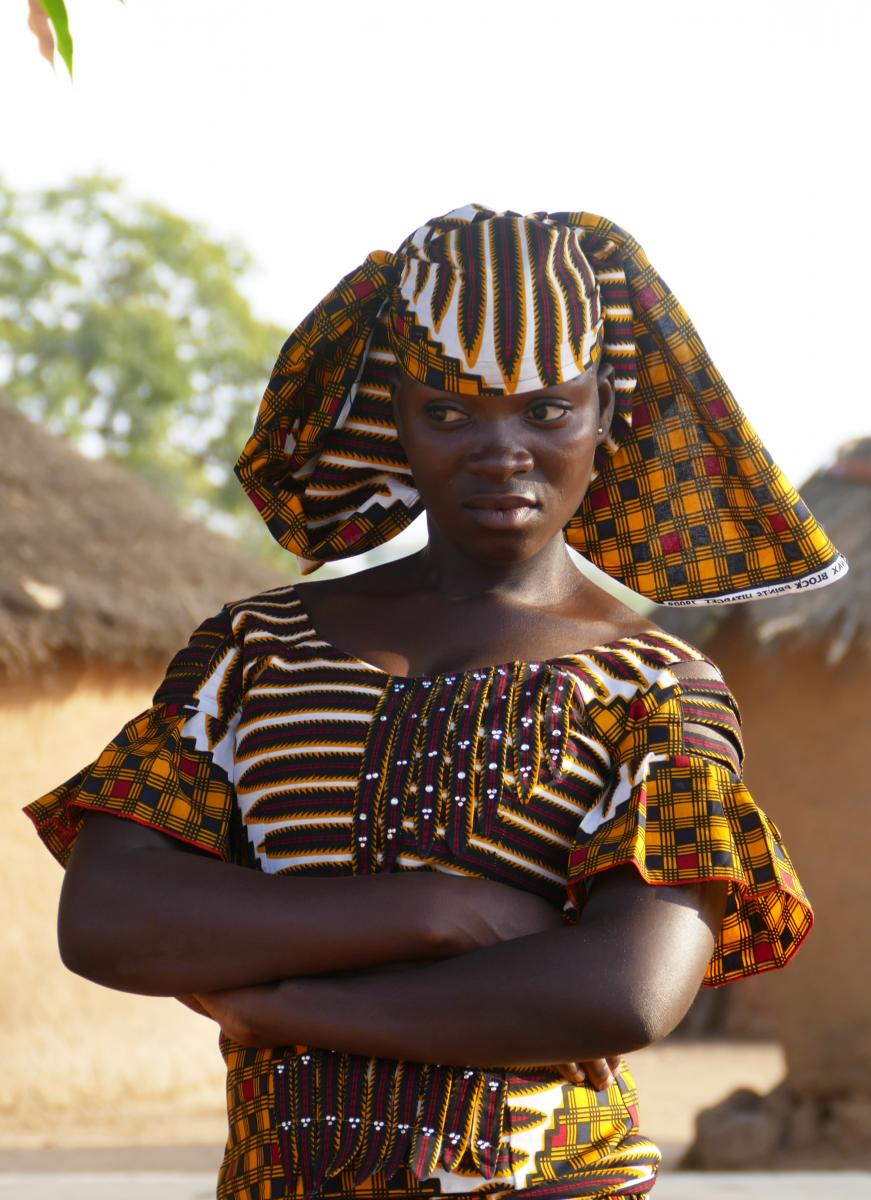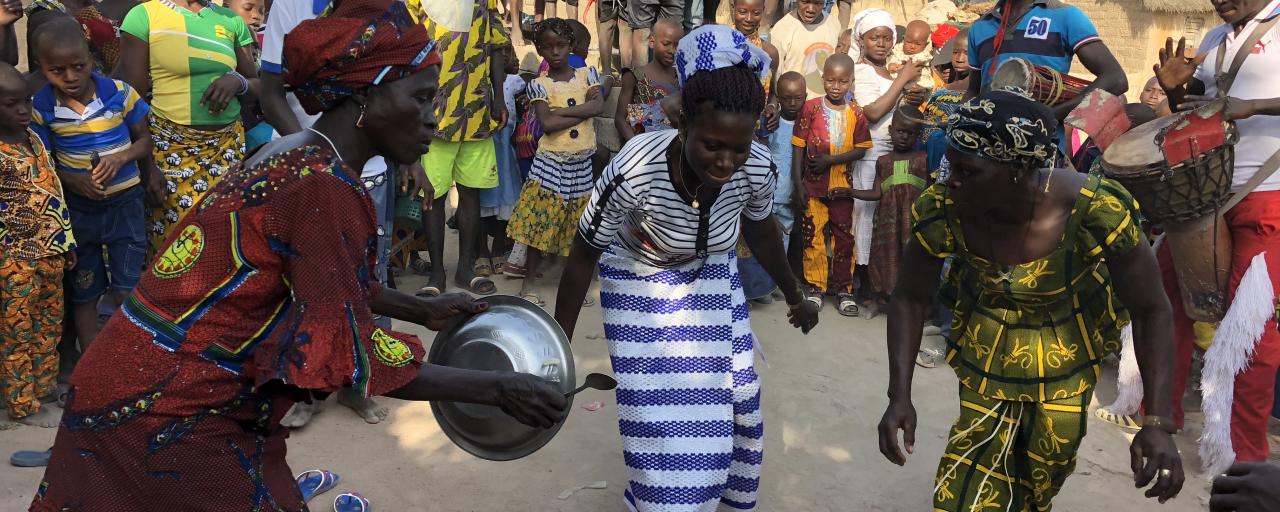Submitted by SafariADV on Wed, 2019-02-20
We are in the Ivory Coast, today we visited the town of Kong, where there are two beautiful Sudanese style mosques.
On the way back, a dirt track that makes its way through the vegetation, we decided to stop to visit two Senoufo villages, and more precisely the Lameca 3 village and the Glanda village.
Why 2 villages? Because each village is different from the others, each has its own particularity and its history, each village is like an extended family and, like all families, each one is different from the others.
We stopped at Lameca 3, a village where they were celebrating a party and so we went to have a look; afterwards we went to Glanda because it is a village that has a traditional structure and so it is very interesting to visit.
Visit to the Senoufo Village of Lameca 3 in the Ivory Coast
This Senoufo village is located on the dirt road that leads from Kong to the main road, that reaches as well Ferkessedougou, or Ferke, as it is commonly called.
The structure of the village is not particularly interesting, several more modern houses have replaced the traditional huts; but why are we here?
Simple, our guide has become aware that in this village they are celebrating a party; it is not a traditional dance, it is more a moment of happiness that is expressed by dancing, with the accompaniment of the sound of the drums.
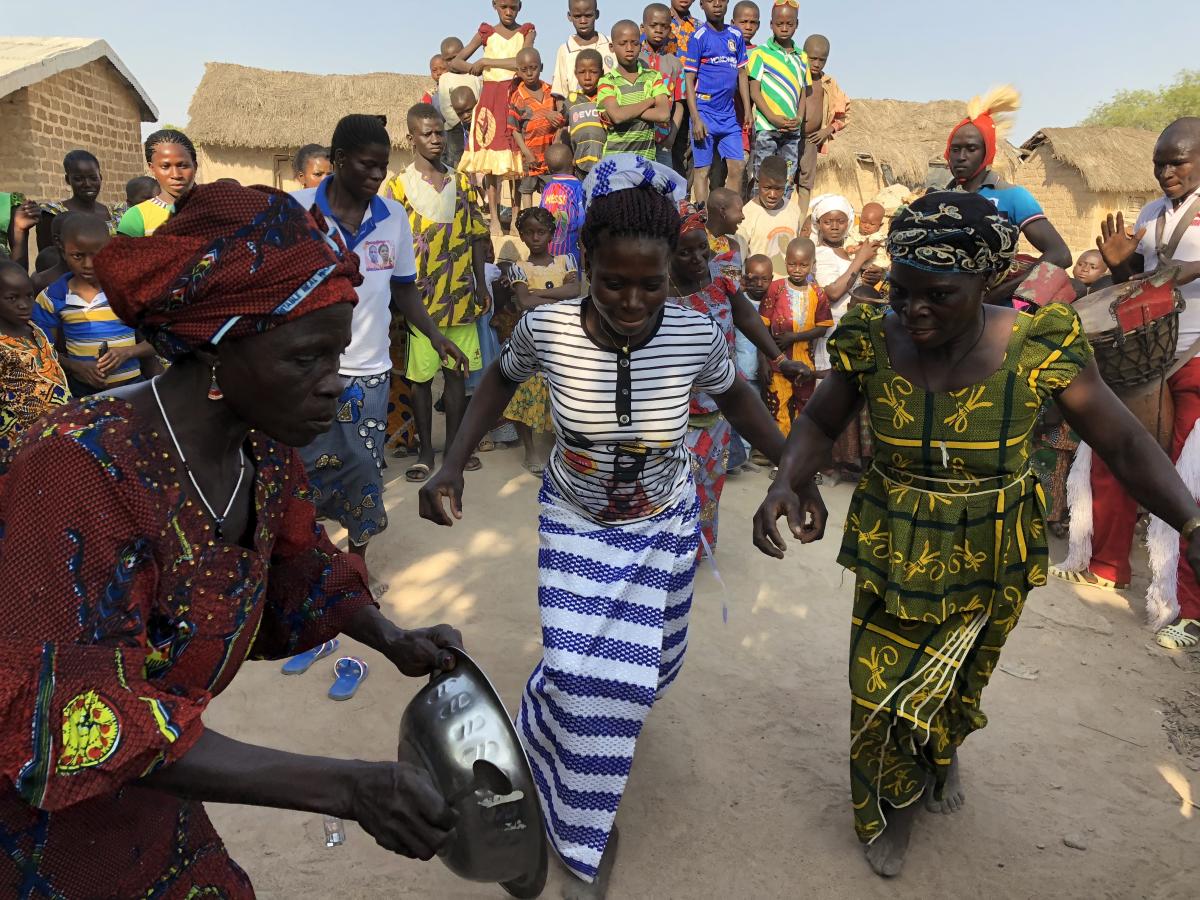
We park the car and ask if we can enter the village, they are very happy to welcome us; we are curious to see the village and the party while they are curious to see us, at least it is an equal exchange and we feel less intrusive.
Two men are playing the drums, giving rhythm to those who dance.
It is mainly women who dance, alternating within a circle of adults and children, who are busy watching, while some women wait their turn to perform; we too come closer and look at them.
We photograph and film both the dancers and the musicians and they take a selfie with us; too funny!
The rhythm is urgent and engaging, they are having fun and we too get caught up in their happiness; it is really a pleasure to be here.
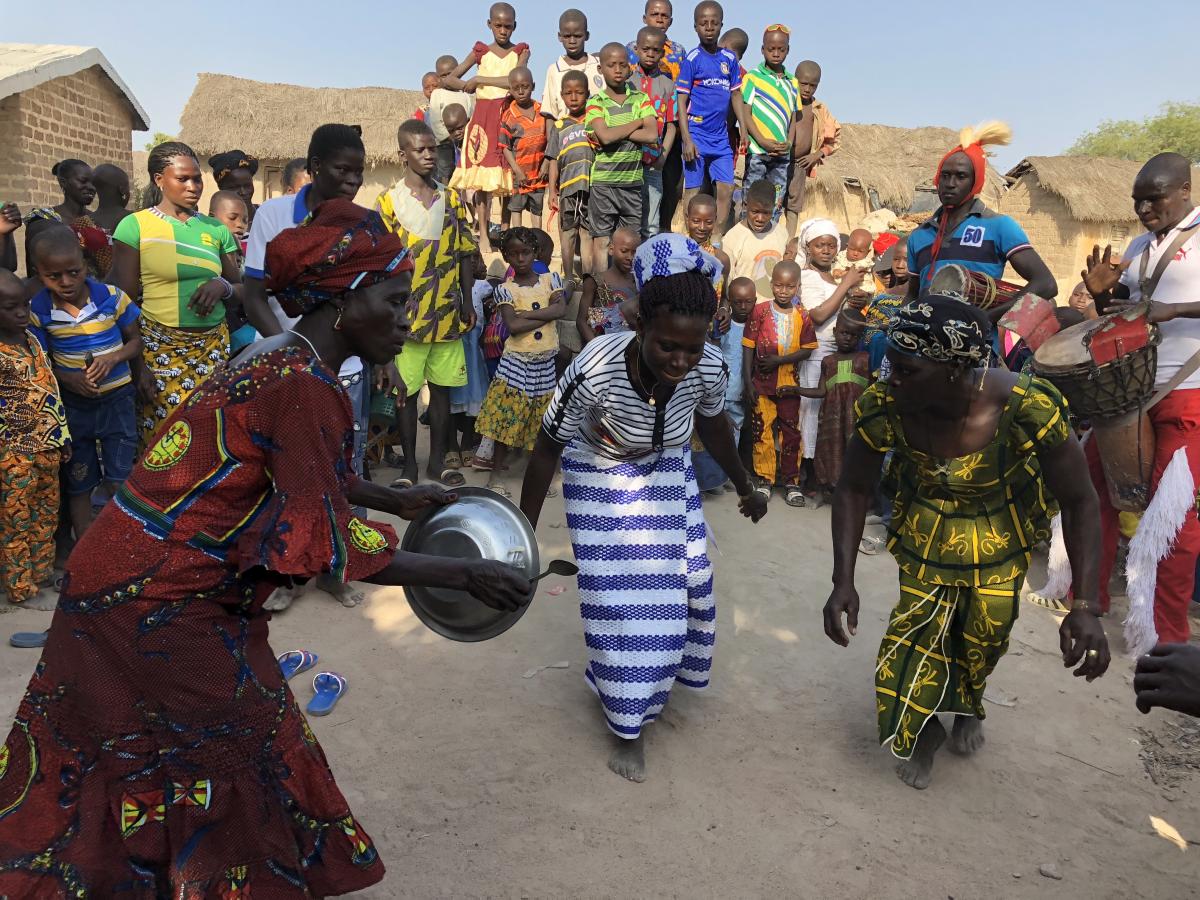
At one point a man approaches with a yellow plastic can and a bowl and offers us some millet beer that they do here at the village; to refuse would not be polite and therefore we drink!
The millet beer is really good, it's sweet and it does not look like alcohol and it's like now in Milan: not filtered, also because in the villages in Africa I think nobody has ever filtered the beer!
When we decide to leave and reach our car, the whole village accompanies us, including the musicians with their drums, women and lots of children; when we get in the car they greet us all waving their hands, what a thrill, they made us feel welcome.
Visit to the Senoufo Glanda Village in the Ivory Coast
After leaving the village of Lameca 3 we continued our journey towards Ferke, but before arriving we stopped at the Senoufo Glanda village.
This village is very beautiful, the huts and barns are all traditional and the people are very welcoming: when they saw us coming and parking the car at the side of the road, they were running to meet us, not only the children but also the adults.
We enter the village and take photographs, it is late afternoon and the light is warm, the best to capture the wonder of this place.
We meet the village chief who tells us a bit of information but above all answers our questions, he is very kind and seems happy that we ask so many things.
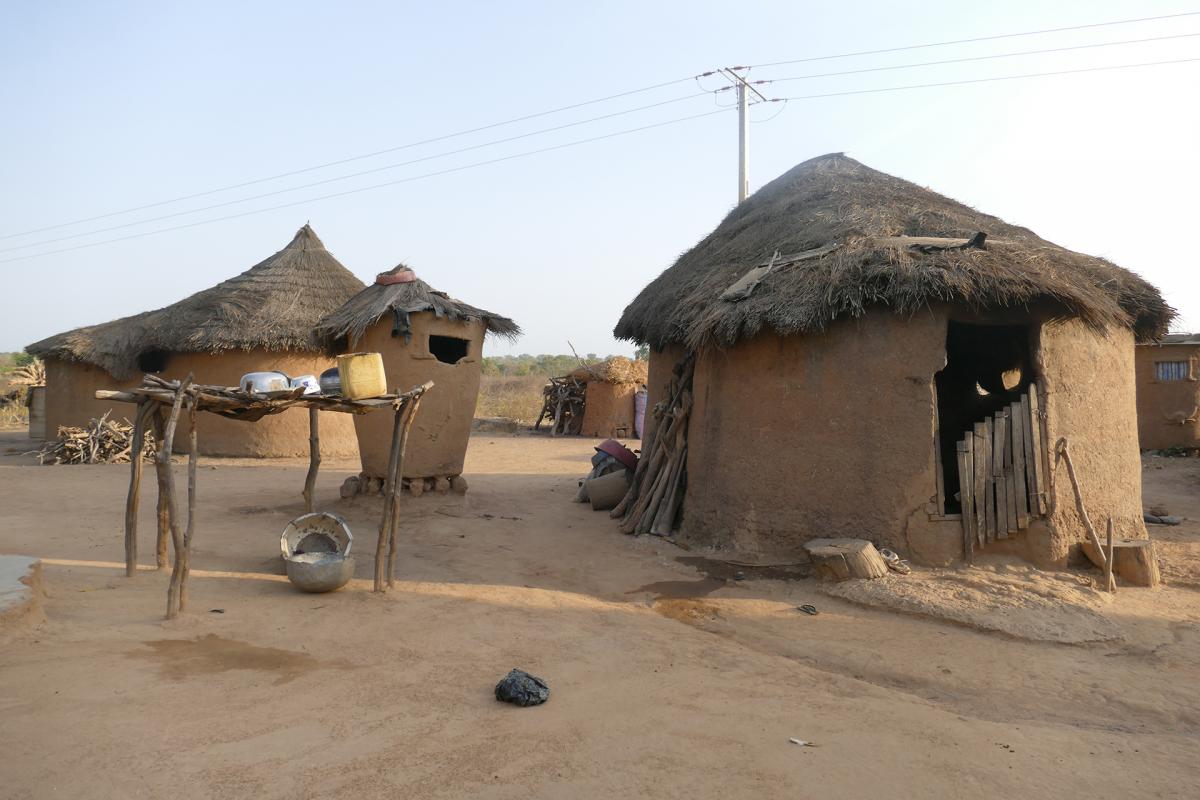
He explains that traditional houses are built using mud and rice straw, that is much more resistant than other cereals, while poles and woods are not used as a support, while the roof is made of straw; these houses resist between 10 and 15 years, then they must be rebuilt.
We also visit the house of a woman, usually every Senoufo wife has her own house, but this is not a rule, sometimes, if the husband cannot afford it, the wives all live together.
The traditional Senoufo house has a sort of entrance, where the kitchen is and it is used during the rainy season, while during the dry season the kitchen is outdoors; this small room also acts as a living room.
Passing the entrance you enter the room where the woman with the children sleeps; the girls remain in the mother's house until they get married, while the boys, after passing the first rite of passage in the forest, abandon the maternal hut.
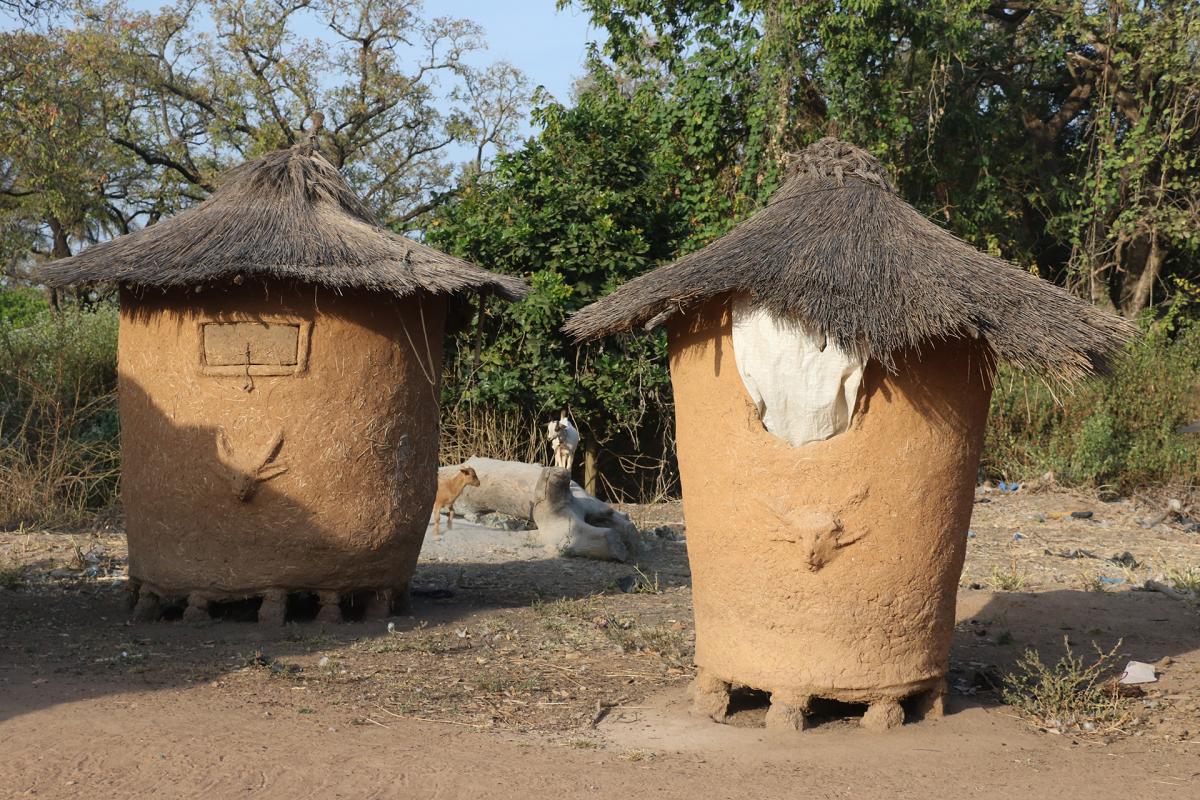
In a corner of the house there are pots, stacked in color and size; for the Senoufo, the wealth of a woman can be seen from how many pots she has, other than jewels and diamonds.
Some pots are used every day but others are used only on special occasions.
When we leave the house we go to see the granaries: they are tall and narrow structures and raised from the ground, they are built with the same technique of the houses; inside they are filled with grains from crops or from market purchases.
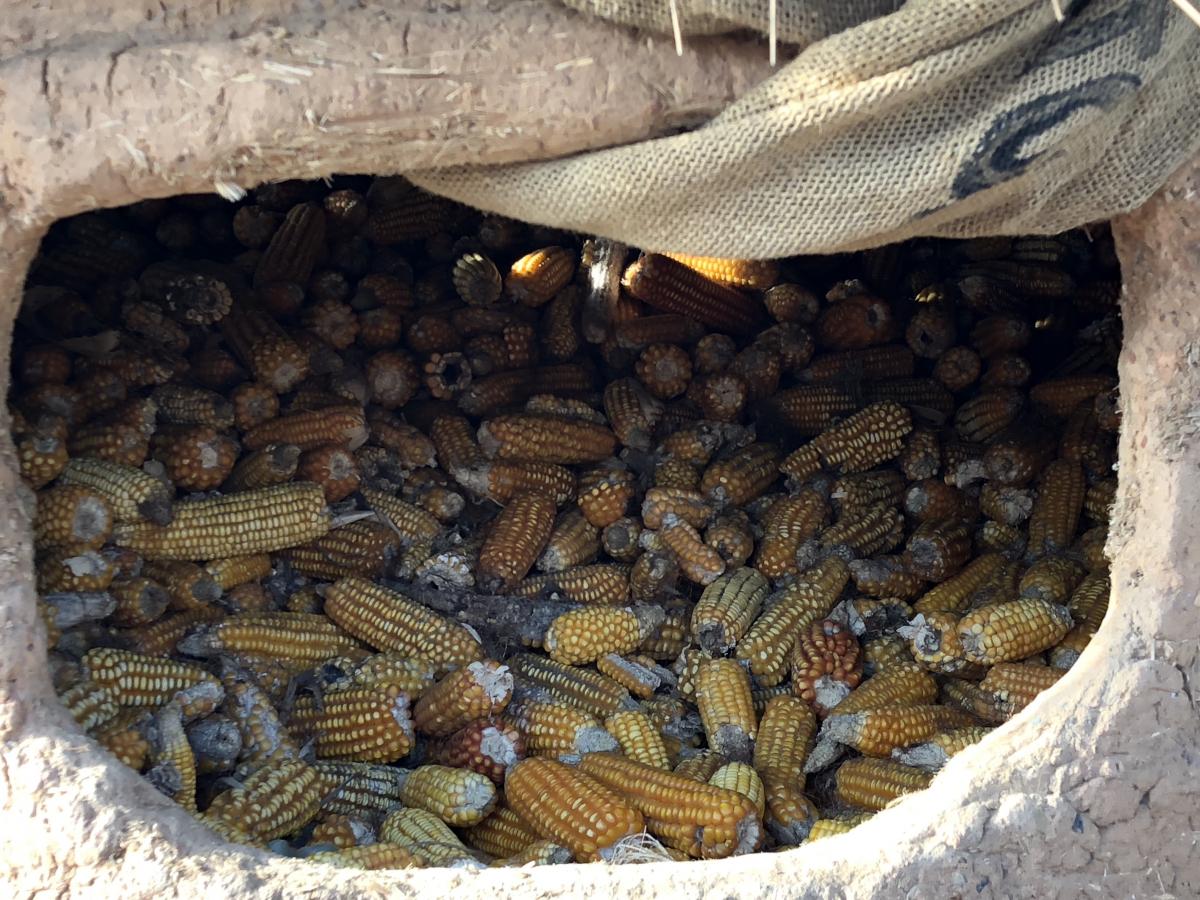
The inhabitants of this village are very hospitable and kind, they see that we are interested in finding out more about their culture and their lifestyle and then they have fun telling us things and showing us everything; we are very pleased because they make us feel welcome.
Once the visit is over, we return to our car and they too, like at the Lameca 3 village, accompany us all, adults and children; they greet us as if we were part of their community, they are quite moving.
We leave and go to Ferke where we will sleep tonight, but we will never forget the welcome and the joy of these people.
